SIBLING Case Studies
KE- ASSURED LIMITED (BRADFORD)
Utilising pre-existing technology patents held by the company, the team at Ke- Assured has been working on a project to develop a security system for the clothing and luxury products industry since 2020. Their innovative system uses the optical properties of polymers to generate hidden images in textiles, which can be read using a handheld device (linking back to a desktop/cloud-based system). Designed to beat the counterfeiters, the technology will allow fashion brands to quickly and easily check in store the authenticity of a product as well as capturing information relating to a garment’s production and supply chain.
“We are delighted with the work carried out. They did exactly what we asked them to do, and with commendable flare and perseverance to actually produce a working device. They understood our requirements, grasped it and delivered!” - Tony Johnson, Director
Get more details about this project by clicking this Link to read the full case study.
R&D PRODUCTS UK LTD (BRADFORD)
R&D products UK Ltd is a family run business that was established in West Yorkshire in 1991 and currently employs 16 people. It specialises in the production of cleaning chemicals for the industrial, janitorial, food production, catering and automotive industries and for domestic applications. As well as supporting thousands of existing product lines, the company frequently responds to requests from customers to adapt existing formulations, R&D products or develop bespoke products.
David Roberts, company director, explained that he was informed of the SIBLING project at the University of Bradford, and when the company was approached by a customer looking to replicate a cleaning solution, he got in touch.
“If we can produce new products that can compete on price with international competitors, it helps us and our customers to grow” David Roberts, Director
Get more details about this project by clicking this LINK to read the full case study.

GAIA PACKAGING (WAKEFIELD)
Gaia Packaging Solutions Ltd was officially launched in Nov 2016 by Tim Carsley (MD) and Stephen Piper (Head of Sales). These founder members have an extensive supply chain background and expertise in delivering meaningful logistic and packaging solutions in complex and challenging distribution channels.
The GAIA team have built collaborative relationships with business partners and suppliers ensuring GAIA offers leading edge industry packaging solutions. GAIA acknowledges their impact on the packaging waste chain, meaning their solutions mitigate waste, create and promote sustainable reusable solutions.
GAIA wanted to undertake a Life-Cycle Assessment (LCA) for one of their key product ranges pcwAIR|SHIELD™, which formed part of a Net Zero Campaign being implemented by one of their corporate clients.
“Our work in the circular economy sector is very important to us and we are constantly innovating and redesigning to reduce the impact our products have on the environment, we asked the project SIBLING team to use their expertise to develop a LCA tool which would be tested on one of our key products”-Tim Carsley (Managing Director)
Get more details about this project by clicking this LINK to read the full case study.

Hydro Wash (Bradford)
Hydro Wash Ltd are specialists in high pressure washing and steam cleaning. Their service provision includes on-site wheelie Bin Cleaning, bin chute cleaning, commercial car park cleaning, fast food drive through steam cleaning, line marking, chewing gum removal, exterior building cleaning, bin store cleaning and much more. Based in Bradford they can provide a commercial Bin Cleaning and bin chute cleaning service anywhere in the UK.
Hydro Wash used a sanitising product in their cleaning formulations which had been withdrawn from the marketplace meaning they had to look for alternatives. One option was to consider their own in-house manufacture. To do that they needed some deformulation analysis performed on a sample of the product. They did not have the instrumentation for this type of chemical analysis and reached out to the University of Bradford for support through project SIBLING.
"At Hydro Wash, we pride ourselves in delivering highly efficacious washing and cleaning solutions to our clients. An important sanitising product that we regularly used in our cleaning services was no longer available, so we wanted to explore manufacturing this ourselves. We asked experts in the SIBLING team at the University of Bradford to deformulate the product so we could better understand its chemical composition”-Andrew Farrant, Director.
Get more details about this project by clicking this link to read the full case study.

Cogent Mechatronics (Leeds)
Founded in 2017 Cogent Mechatronic Ltd is a highly creative engineering business which specialises in the sale of bespoke design motors, actuators, and specialist mechanisms for a range of industry sectors. They have grown their inhouse manufacturing capability and recently invested in new equipment for production of a variety of precision components and want to develop and implement enhanced Quality Assurance approaches for verification of product quality. Cogent approached the Faculty of Engineering at the University of Bradford for technical support under the SIBLING program to assess various techniques for evaluation of components manufactured in-house.
We have seen our in-house manufacturing capabilities grow at scale and like with every manufacturing entity; we recognise the risk of losing quality in our products if we do not review our product evaluation processes. We heard about the work the SIBLING programme at the University of Bradford is offering to SMEs like us in West Yorkshire and reached out for technical support.
Ted Varley, Managing Director
To learn more about this project and what role our scientific instrumentation played in supporting it, follow this link here.

Puffin Packaging Ltd (Leeds)
Puffin Packaging are pioneers in sustainable cold chain packaging solutions. They offer a natural, biodegradable alternative to traditional synthetic materials, harnessing the power of wool to maintain temperature-sensitive goods. Puffin Packaging needed to determine the contents and performance of currently available commercial freezer packs to ensure their new products had equivalent performance.
“At Puffin Packaging, we are always looking for ways to improve our product performance to meet the very high standards we set for ourselves as an organisation. To compare our new products in development we needed to investigate the content and performance of standard commercial freezer packs and so reached out to project SIBLING at the University of Bradford for technical support”- Yannis Archbold, Company Founder
Follow this link to read more about how project SIBLING supported Puffin Packaging.
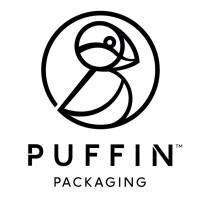
James Robinson Fibres (Bradford)
James Robinson Fibres Ltd (JRF), a leading independent manufacturer, stockholder and supplier of Polyester staple fibres, supplying predominantly to the furniture, furnishings, and bedding industries, with large warehouse facilities situated in Bradford UK and near Keelung, Taiwan, they strive to offer excellent customer service with consistency and continuity of supply in the UK and Global markets.
“At James Robinson Fibres, we strive to deliver excellence in all our products and services. We needed to investigate the behaviour of our recycled polyester fibre and get to the root cause of the challenge we were facing which had huge financial implications for our business, this is why we reached out to Project SIBLING for support” - Michael Walsh, Group Technical Director
Follow this link to find out how project SIBLING supported JRF with this project.

CrystecPharma (Bradford)
CrystecPharma is a crystal and particle engineering company applying proprietary modified supercritical fluid (SCF) technologies to improve the performance of medicines. Crystec’s novel technology prepares active particles for use in inhaled medicines. The company needed to prepare particles using conventional milling and then characterize them to compare with those made from their own technology. They reached out to the University of Bradford’s Centre for Chemical and Biological Analysis and received support through project SIBLING.
“Our focus at Crystec Pharma is on simplicity of product formulation, accelerated development, and designing highly efficient manufacturing processes that contribute to a greener planet. We needed to carry-out some analyses that required equipment that we didn’t have and that’s why we reached out to project SIBLING”. Dr Lyn Daintree, Development Director
Follow this link here to find out more about how we supported CrytecPharma with this investigation.
Arterius Ltd (Leeds)
Arterius is an innovator in polymer technologies for medical devices, with applications in vascular interventions targeting arterial diseases. They are based in Leeds, West Yorkshire. Arterius needed to measure the exact amount of two drugs released from their Drug Coating Balloon technology into the blood vessel wall and required state-of-the art instrumentation and analytical expertise to analyse samples obtained experimentally by the company.
“We know our novel technology will greatly impact the way arterial diseases are managed and treated but we quickly needed to measure accurately the dosage dispensed through our absorbable drug delivery system, this was why we reached out to project SIBLING." Dr. Kadem Al-Lamee, Chief Technical Officer at Arterius
Click here to read more about what Project SIBLING did to support Arterius.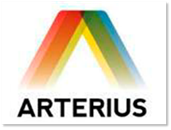
CAYMAN Case Studies
Client Case Study: Brouns & Co

Brouns and Co was founded by historic building conservation expert, Michiel Brouns, who gained his expertise surveying historic buildings in his native Netherlands, before moving to the UK in 2006 and setting up Brouns and Co in Yorkshire. Initially, the company imported Linseed paint from Sweden, but early in Spring 2022, the company brought the manufacturing process back into Yorkshire. It now employs a core staff of seven people.
Linseed paint and oils are traditional treatments for wood and metal which disappeared from the UK market after the second world war but continued to be used in a small way in Sweden and Denmark. Linseed oil paint protects against all weathers meaning that wood and iron do not rot or rust one painted. It also enables the evaporation of moisture instead of trapping it under an impermeable film. Made with 100% all natural ingredients, the paint does not contain any plastics or Volatile Organic Compounds (VOCs).
Michiel was contacted by Project CAYMAN through LinkedIn and decided to take them up on their offer. In Michiel’s words:
“I decided to respond to the approach on LinkedIn because they weren’t trying to sell me anything, it wasn’t a sales pitch, just a straightforward offer about how they could help me with technical analysis and data”
Keen to understand a bit more about the chemical properties of some parts of their supply chain, Michiel was put in touch with another member of the team who explained in layman’s terms, the tests that could be done and what the limitations of those tests were.
The tests were undertaken quickly and successfully addressed 95% of the queries, reflecting their known limitations. Michiel described the tests as playing a pivotal part in enabling them to start manufacturing Linseed paint again in Yorkshire. Had he not been able to participate in the project, he would most likely, have gone abroad where there is greater knowledge of the paints.
The impact of bringing the manufacturing process back to Yorkshire is significant. It means the company has far more control over the quality of its products and can react much more quickly to the market. Looking to the future, the company has significant growth plans, including exporting large quantities to the US next year.
The project has also changed the company’s views on working with the Higher Education sector. In Michiel’s words:
“We have not worked with any universities before, but as this has been a successful process, we are much more positive now about working with universities on technical aspects of our business”
Client Case Study: AgriFoodX Ltd
AgriFoodX is a research, consultancy and training company which specialises in the use of agri-food by-products as a source of environmentally sustainable material for innovative food products, supplements, pharmaceuticals, personal care and packaging. Established just over three years ago, it employs four people and is based just outside York.
Company Director, Graham Bonwick, first heard about the opportunity to work with Project CAYMAN via an email from the Local Enterprise Partnership, who were advertising the demonstration and learning workshops. Graham was interested in these sessions as they offered an opportunity to learn a new technique and work with a local Higher Education institution as well as getting to know people and make connections.
The team at AgriFoodX were aware of NMR, but wanted to improve their understanding of it and work out what it could do for them in the future. As the event provided an opportunity to bring a sample, Graham provided a sample of Chitosan. Chitosan is derived from crustacean shells (a waste product) and is composed of two molecules. As a naturally derived product, the proportion of these molecules varies considerably, and this variability affects the solubility and behaviour and therefore the potential end uses of the product. Traditional chemical characterisation methods can be slow and time-consuming and therefore Graham was keen to understand if NMR could provide a faster characterisation method for use in the supply chain.

The learning and demonstration workshop proved to be really valuable, improving Graham’s understanding of the process and science behind the NMR as well as improving his understanding of the University of Bradford and their capabilities. In Graham’s words:
“We did not know a lot about the University of Bradford before, but this has been very positive”
The analysis undertaken through the workshops proved that the NMR could deliver rapid results as well as cut down on the need for other tests. In Graham’s words:
“We have actually got a better understanding of our materials than we expected. This cuts down on the need for other tests and gives us confidence on some of our materials”
Looking to the future, the sampling conducted during the project proved that the NMR technique could be useful within this sector and the team at AgriFoodX are exploring further collaborative commercial opportunities with the University of Bradford.
Client Case Study: Io-Cyte Ltd
Io-Cyte Ltd is a three year old start-up company which has developed a new advanced wound dressing for use on chronic, hard to heal wounds such as ulcers, pressure sores and burns. Io-Cyte is a spin-out from Xiros Ltd, a well-established SME company dedicated to orthopaedics.
Wound care places a massive burden on healthcare systems globally and the NHS spends an estimated £5bn per year on wound care, caring for over 2 million wounds. The new dressing, developed by Io-Cyte, is designed to be anti-microbial, anti-inflammatory and highly absorbent whilst maintaining the right conditions for the wound to heal. A key property of the dressing is its anti-microbial properties. In the wound environment, bacteria often form colonies that excrete a protective gel over the colony (known as biofilm). These protect the bacteria from common anti-bacterial products and prevents the wound from healing.
The new dressing uses Iodine as its active anti-microbial agent. The team at Io-Cyte wanted to be able to accurately measure the amount of Iodine in the product and the form in which it exists (as it is only active in the molecular form). The team currently use a relatively simple titration process to test Iodine levels, which is effective, but not particularly accurate. In submitting information to regulatory authorities, they knew they would need to provide more accurate results, as well as being able to identify the proportion of Iodine in the active form and the stability of the active ingredient over time. Further, they knew that they would need to be able to accurately measure Iodine levels as they scaled up their production processes to ensure product quality.
The team initially approached the Centre for Process Innovation (a founding member of the UK Government’s High Value Manufacturing Catapult) for advice, but the Centre referred them to Project CAYMAN at the University of Bradford.
The Project CAYMAN team quickly established that they were eligible for support and met with the Io-Cyte team to understand the problem they were trying to solve. In the words of David Farrar (R&D Director):
“We had some helpful discussions with the University. They had a good understanding of the problem we were trying to solve and took time to think about it and come up with the best solution”
Whilst the team at Io-Cyte expected the University to suggest the use of complicated kit and techniques such as ICP mass spectrometry, they actually proposed a standard titration test as the best method of measuring the Iodine levels. Io-Cyte had already been using titration tests, but their equipment did not allow a particularly precise measurement as it was based on a subjective assessment of colour changes. The University however had access to auto-titration equipment, in which electronic sensors record the measurement (potentiometric method). This equipment therefore allowed a much more precise measurement to be taken.
The research report provided Io-Cyte with an accurate and precise measurement of Iodine levels in their product and speciation of molecular from ionic iodine which they have included within the information pack recently send to the United States regulator (the Food and Drug Administration). As the company moves forward into the production phase, the support from the project to identify the most appropriate Iodine measurement technique means that Io-Cyte can now invest in their own auto-titration equipment, confident that the equipment will perform as required.
Client Case Study: Microtex Partnership
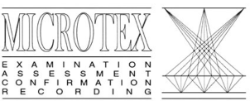
Drawing on his considerable experience in the textile microscopy and materials industries, Dr Phil Greaves founded his own company: Microtex Analysis over thirty years ago.
Based in Otley, West Yorkshire, Microtex is a specialist microscopy consultancy providing analytical and investigative services for manufacturers, processors and retailers of textiles at all stages. The company also works with test houses, trading standards and the legal profession, undertaking product/process evaluation and technical investigations.
Phil approached the University of Bradford when he was presented with a recurring problem by a local manufacturer which required specialist analysis facilities that were beyond his own capability. The University put him in touch with the project CAYMAN team and he was invited into the University for a full tour of the facilities which in Phil’s words:
“…was such an eye opener. I had no idea what they had available. The Analytical Centre is just fantastic and they were so welcoming, especially considering that we were just coming out of a global pandemic”
Following a more detailed conversation about the requirement and an examination of the samples, the team devised a programme of investigation to support Phil with his analysis. Phil was particularly impressed by how open the team was to applying their usual processes for analysing biological and chemical materials to an investigation of textiles, experimenting with different techniques to find the best solution. He couldn’t have been happier with the results:
“The team was able to identify a particular lubricant in the production process that was causing the problem. We presented the results to the company together and they have been able to improve their manufacturing processes and also reduce their costs as a result of the investigation”
Phil was so impressed with the experience that he has already referred two other businesses to the Project CAYMAN team to benefit from their expertise and intends to work with them on a commercial basis when the ERDF project comes to an end:
“This project was the start of a new relationship with the University of Bradford which I’m excited to continue. They have tremendous capabilities and now I understand the breadth of their facilities and expertise I can expand my own offer to businesses, working with them. They will be my ‘go-to’ analytical test centre which will be hugely beneficial both for me and the University as well as for the businesses that we’ll be able to support together”
Client Case Study: London Oil Refining Company (Astonish)
LORCO is a Bradford based business, which owns the Astonish Brand of household cleaning products. Established approximately 40 years ago, it employs between 75 and 100 staff, mainly in production, although the company does have its own product development laboratory.
The company had a problem with its shower cleaner, which under colder conditions, suffered from a wispy, hazy precipitate, (where chemicals in solution start to solidify). They knew the problem was associated with a particular surfactant, known as APG, which the company sourced from a number of different suppliers.
When the Project CAYMAN team approached LORCO, who had worked with the University of Bradford before, it seemed like an excellent opportunity to tackle this problem.
Sally Pearson, a development chemist at LORCO, submitted samples to the CAYMAN team to run through the NMR and mass spectrometers. The process found an impurity present in the affected samples, but not the unaffected ones, suggesting that the manufacture method of the APG may differ between suppliers. It is thought that the impurity may stem from the use of a catalyst in the manufacturing process by some suppliers and not others. The difference in manufacture method may be the cause of the precipitate seen.
Whilst the team at LORCO still has work to do, the support from CAYMAN has helped them to understand the nature of the problem and address the immediate needs of the business.
In the short term, the company has addressed the problem by carefully selecting suppliers where the impurity is not seen. Whilst these sources are slightly more expensive, it ensures that LORCO can continue production and avoid recalls. In the longer term, they are working in the lab to tweak the formulation as well as working with other supply chain businesses to improve their processes.
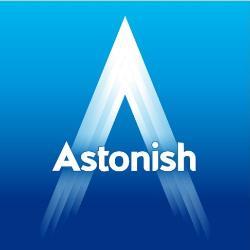
Without support from Project CAYMAN, the LORCO team would have continued to investigate the problem, but as they do not have the equipment available to the University of Bradford, they would not have gained the knowledge about the differences between the samples.
In Sally’s words:
“It has been a really good exercise to do, and it’s good to get an idea of what the University can do for us. They have much more analytical skills than us, so it’s good to get that third party analysis done.”
Client Case Study: WJN Partnership and Gluco Technologies
Professor Anthony Johnson and Dr Steve Wong are polymer chemists with a long track record in academia and industry including time at the University of Bradford where Prof. Johnson held the posts of Chairman of the Postgraduate School of Polymer Science and Head of Chemistry at different times. Their interest in polymer reaction engineering has led to them setting up a number of their own businesses to commercialise products, as well as a successful consultancy business.
Having been introduced to the CAYMAN project, they were excited about how the NMR technology might complement their own in-house analytical capabilities. After contemplating where NMR techniques could be most beneficial, two projects were devised (one in each company):
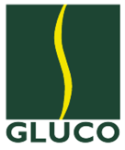
Gluco Technology: Established in 1998, Gluco Technology was set up to commercialise a novel adhesive discovered by the team. Subsequently, Gluco secured contracts with many SMEs and multinationals, but as yet the team still consider that Gluco has not fulfilled the full potential of the adhesive technology which they believe still holds considerable promise. This product is still being developed alongside a number of others.

WJN Partnership: Established in 2017 WJN Partnership was set up to explore specific and broader areas of interest such as novel security systems. They are also interested in the low-energy content manufacturing processes using batch and continuous methods to make finished products directly from raw materials, biodegradable polymers being a particular target.
To enhance their marketing and sales capability, the Partnership has joined forces with a specialist marketing and investment company which is providing the support needed to take forward projects for both companies. The hope is that the activities of the two micro-SMEs will lead to significant growth as manufacturing companies when the world emerges from the Covid 19 pandemic.
The NMR technology has allowed them to look at new polymer formulations being developed in both companies. The analytical technique has helped them to better understand interactions taking place between constituents in the formulations. It is hoped that this type of fundamental molecular information (e.g. molecular diffusion rates) will contribute to the macroscopic behaviour of polymers being designed e.g. rheological behaviour during melt processing. In the short term, the NMR studies have been carried out as part of the patenting strategy of both companies, with applications in train.
The pair were delighted to have the opportunity work with the new NMR techniques through Project CAYMAN as this type of analytical technology would not merit purchasing for their own laboratory. They are thrilled that the University has expanded its analytical services with such a powerful new instrument and look forward to further collaboration in the future. In Tony’s words:
“The University team were utterly professional and have helped us to understand the molecular properties of our new formulations, which will help with the long-term development of our products.”
Client Case Study: MEDQP Limited
MEDQP Limited is a management consulting company based in Leeds who are early phase, medical experts. Established in 2006, it employs around 5 staff and is led by Tony and Liz Lockett. e company is developing new inhaled treatments for COVID-19 and other lung infections, they have developed a novel drug delivery system that is capable of delivering multiple payloads of drugs simultaneously into the lungs. However, analysis of these pharmaceutical formulations is challenging, specifically in determining the amount of drug(s) that are encapsulated in the excipient particles and assessing the stability of those drug/excipient particles which is critical information required for regulatory approval.
When the Project CAYMAN team first met with MEDQP they realised that this problem may be solved by using the new NMR techniques being developed at the University of Bradford as a result of CAYMAN project funding. In particular, the CAYMAN team identified DOSY NMR as a potential technique that could be used to analyse the particles.
Project Outcomes:
- With help from MEDQP partners from the University of Hull the CAYMAN team successfully prepared samples of blank and drug filled particles for analysis by DOSY NMR.
- DOSY NMR signals from the blank and drug filled particles were similar but over time the particles containing the drug started to show NMR signals that represented the free drug indicating that the drug was initially fully encapsulated in the particle and slowly released over time.
- The drug release profile from the drug/excipient particles was determined by monitoring the DOSY NMR signal from the particles over time.
The technical team at MEDQP wrote:
“The CAYMAN Gant project by the University of Bradford using their NMR spectroscopy will benefit MEDQP Ltd. It has confirmed that our chosen formulation meets our initial requirements. The project has shown an additional benefit by giving us the release characteristics of the drug. The enhanced data will progress our development of the next stages of the project. We now intend to ask funders for additional funds to develop further a product for upper respiratory tract viral infections such as COVID-19”
Following on from the CAYMAN project the University of Bradford team further collaborated with MEDQP Ltd on an Innovate UK Biomedical Catalyst grant application.
